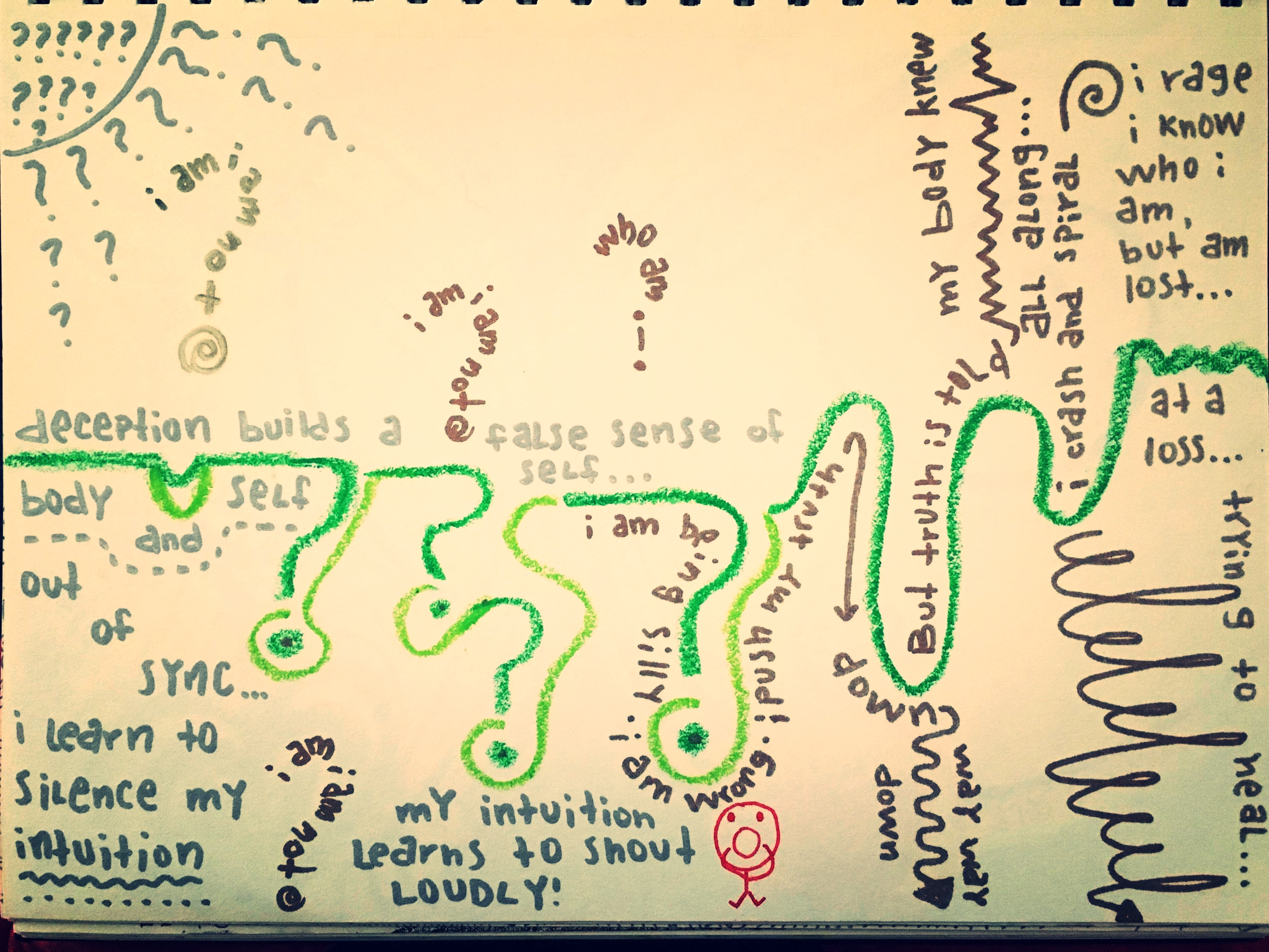This analogy is borrowed (with permission) from Gordon Neufeld's work on attachment. Please listen to the audio recording for a deeper explanation of this concept.
Above: a timeline I created for myself last year. I was beginning to regain a sense of knowing who I am, but also accutely aware that "I" was lost.
My life as rings of a tree. As I created each ring, I reflected on how my attachment needs were or were not met. I pondered on what lessons I learned about people and what to expect from them.
It was noteworthy to me that during my early teen years, I remember calling the police on a man who was sitting outside our home in his car. The situation felt threatening. I recall telling my mom, and her downplaying it. This was the first time I began to wonder if another man could be my father. My mom did not bestow her secret on me though, and so neither of us was truly known to the other.
Invitations:
After taking in this information on attachment, take a moment to check in with yourself. It may be that you could benefit from taking a short break, to reflect, meditate, stretch, or get a refreshment before beginning. You may use this time to gently reflect on joyful, sad, disappointing, or fearful times in your life when your needs were or were not met.
1. Create a timeline for your life. You can be really free form with this. Some ideas include: making a spiral to symbolize your journey; create or print off a mandala to fill in with your information and images, colors and symbols; draw a tree truck as though it's been cut down, fill in the rings of the tree with the important events in your life, or any form that speaks to you. Reflect on how your attachment needs were or were not met, and by whom. Consider including a spiritual element if that speaks to you: how has connection to a spirit source supported you, or not supported you on your journey? Were there people other than your parents that were reliable attachment figures?
2. Create a puzzle. Using paper, clay or any medium that speaks to you create a puzzle representing your life. Again, reflect on your attachment figures, this may or may not be your parents, and try including something to communicate your attachment experiences or beliefs.
3. Your Attachment Animal. Intuitively let an animal come to you by breathing deeply and reflecting on the concept of connected-ness. Once an animal comes into your thoughts, do something to represent it, using whatever expressive means that appeals to you. (This is not about being able/not able to "draw" an animal, this is about connecting with nature and how attachment is expressed in the animal world.) This does not mean you need to "draw" the animal, it does mean represent it, reflect it, embody it. Consider reading up on your animal and seeing what things about it appeal to you and try including some of these elements in your work.
Attachment Theory and LDA's
Attachment theory has to do with the emotional bonds that connect people, across time and space. Our attachment style can greatly effect our romantic partnerships, parenting, and other relationships.
As LDA's we are particularly interested in how attachment relates to parenting, as our early relationships with our caregivers are thought to establish our attachment style, and expectations of how others will relate to us.
It is thought that an adult who senses and meets the needs of their child, consistently, lovingly, and predictably, contributes to establishing a "Secure" attachment style in their child, as these early parent-child interactions help us to form our beliefs and expectations regarding all human relationships.
As humans grow and develop they can form attachments to multiple caregivers, including their parents, grandparents, siblings, and others.
We may come to believe that the world is mostly safe and that people can be counted on; or that the world is a dangerous place causing us to feel anxiety and fear in our relationships as situations seem unpredictable and alarming.
This topic has huge implications for LDA's. We were relinquished or kept from one or both of our birth parents; raised in our adoptive families with endless variations of attachments and bonding; and all discovering at one point or another that we were adopted, and deceived by the people we were supposed to be able to trust the most.
It is widely recognized that adoption inherently carries attachment issues; but our adoptions have an added layer of (long-term) deception. Some questions to ponder: How does this affect your view of the world? How is your ability to trust changed? Does discovering the deception disrupt your attachment to your a-parents? Do you feel that the deception itself disrupted the bonding even before discovery?
“We are only as needy as our unmet needs”
Above is a quick video explaining attachment theory. What attachment style are you? Do you feel your attachment style changed post-adoption?
Alternate invitation:
Free write about attachment. Reflect on how this learning speaks to you and freely write: a poem, a journal entry, just words, or another piece of your adoption characters story.



